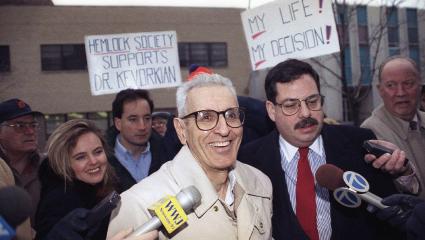


The unsolved mystery of the Tylenol Murders
Ever wonder why some over-the-counter medications are not as easy to access? Or why are they packaged the way they are? In the early 80s, the Tylenol Murders made significant changes in how these medications are distributed, packaged and sold. Here’s why.
In 1982, the Chicago area was gripped by fear as a series of sudden, unexplained deaths unfolded. Seven people died after ingesting Extra-Strength Tylenol capsules that had been laced with potassium cyanide, a lethal poison.
But who is the culprit?
Join us at Crime+Investigation as we cover the 1982 Tylenol Murders, where an unknown murderer killed at least seven people. Explore how people came to realise something was wrong and how the killer has never been found to this day.
The first victim
The first known victim was 12-year-old Mary Kellerman of Elk Grove Village, who died on 29th September after taking Tylenol for a cold.
The young girl, who complained of a sore throat and runny nose, was given one Extra-Strength Tylenol capsule. Little did her parents know, the pill was laced with highly poisonous potassium cyanide.
Mary died soon after, a death that shocked the nation and would change things forever.
More unexplained deaths
Later that day, 27-year-old Adam Janus of Arlington Heights also died suddenly and unexpectedly. It was thought that the postal worker had suffered a massive heart attack.
In a heartbreaking twist, his brother Stanley and sister-in-law Theresa also died after consuming Tylenol from the same bottle while mourning Adam's death.
Additional victims included Mary Reiner, Mary McFarland, and Paula Prince, all of whom had taken Tylenol capsules purchased from various stores in the Chicago area.
A shocking discovery
At first, medical professionals were baffled by the deaths in the same Chicago area. They were unexplained. How and why did these people die so suddenly? In early October 1982, investigators began piecing together the tragic puzzle with the help of a local nurse.
Helen Jensen from Arlington Heights played a crucial role in identifying the link between the deaths and Tylenol capsules. Her observations led to the discovery that the capsules had been tampered with and laced with cyanide.
The gelatine-based capsules were popular amongst the public as they were small and easy to swallow. It was the bestselling non-prescription pain medicine in the United States at that time. Sadly, the pain within the country could not be relieved.
The investigation and James William Lewis
Despite extensive investigations, the person responsible for the poisonings was never caught.
However, a man named James William Lewis became a person of interest after he sent a letter to Johnson & Johnson, claiming responsibility for the deaths and demanding $1 million to stop the killings.
Lewis was convicted of extortion and served 13 years in prison but was never charged with the murders.
The aftermath
The public reaction was one of shock and fear. People were advised to avoid taking Tylenol, and stores quickly removed the product from their shelves.
The incident led to widespread panic and a significant loss of trust in over-the-counter medications. It also led to the passage of the 'Tylenol Bill' in 1983, making it a federal offence to tamper with consumer products.
The Food and Drug Administration also implemented stricter regulations for over-the-counter medications, including requirements for tamper-evident packaging.
For the families of the victims, the pain remains. Kasia Janus, whose father, uncle, and aunt were among the victims, expressed ongoing grief and a desire for justice, even decades later.
'It is something that altered the life of every person in the world,” Janus told news outlets. “And I want people to know that, yeah, this was my family, and it has changed all of us.'
Love true crime? Stay in the know with the Crime+Investigation Newsletter! Get exclusive access to new articles, episodes, clips, competitions, and more – delivered weekly and completely free. Don't miss out – sign up today!












